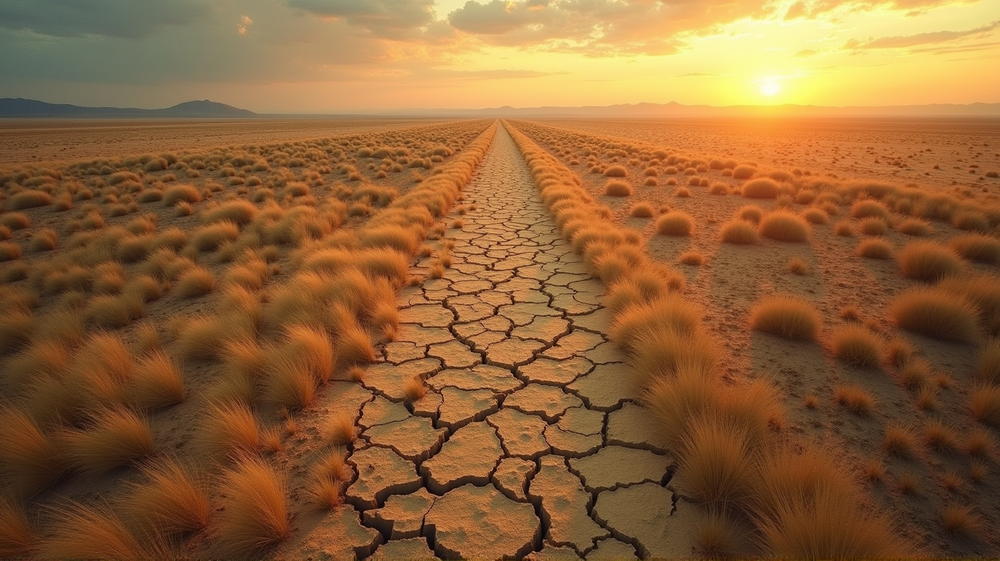Severe Extended Droughts Threaten Earth's Grasslands: What the Future Holds
In the continuously evolving narrative of climate change, a new alarm is ringing: the severe and prolonged droughts that are threatening grasslands and shrublands worldwide. According to the International Drought Experiment (IDE), these ecosystems approach a critical tipping point as climate extremes intensify. The findings of this global initiative, covering six continents, highlight the severe ecological repercussions that such prolonged dryness can impose on nature’s productivity and resilience.
Investigating the Vulnerability of Ecosystems
Timothy Ohlert and a panel of researchers embarked on a mission to gather genuine insights into how consecutive years of extreme dryness affect terrestrial ecosystems. Their goal was simple: to understand the unseen impacts of extended droughts on ecosystem productivity, focusing on grasslands and shrublands. The study’s results are revealing a troubling reality: even though ecosystems can withstand occasional moderate droughts, chronic extreme events can drive them to collapse.
The Perilous Cycle of Climate Extremes
The ideations of this experiment bring to light a distressing trend. With climate change, extreme meteorological events have become increasingly frequent, making it essential to grasp their accumulated consequences fully. While some ecosystems seem to adjust to initial drought stress, allowing for a temporary stabilization, the continued pressure of extreme conditions proves detrimental. This trend reveals a potential domino effect, rolling from moderate discomfort to destructive declines in ecosystem health.
The Science Behind the Study
Ohlert and his team employed a rigorous methodology in their research. They constructed a multi-year rainfall-exclusion experiment to simulate varying durations and severities of droughts. Over 74 grassland and shrubland ecosystems were scrutinized to examine their responses to prolonged dry spells. The findings were unanimous: the first year struck ecosystems with a sharp productivity decline, but further years of drought exposure led to even more drastic losses.
A Glimpse at Ecosystem Acclimation
Interestingly, the research suggests that ecosystems display an initial resistance by stabilizing productivity when facing moderate drought. Unfortunately, this resistance is fragile, and the stress of continued extremes can dismantle the inherent defenses that ecosystems have evolved. Extreme droughts, akin to 1-in-100 year events, exacerbate the decline in productivity over time, with impacts heightening as the drought endures.
The Severity of Consecutive Drought Years
One of the most significant revelations from the IDE is the compounding effect of consecutive extreme drought years. Statistics show that these serial events can increase productivity decline rates exponentially – a concerning prospect for regions reliant on these natural resources for economic stability and ecological balance.
The Underlying Causes of Decline
Delving deeper into the data, researchers identified species mortality, failed establishments, and shifts in community composition as primary drivers behind the decline. These factors, coupled with extended dry periods, signify a potential revolution in ecosystem dynamics, steering them towards uncertainty.
A Challenged Future for Grasslands and Shrublands
The findings portend an uncertain future for grasslands and shrublands, with their long-term stability being jeopardized. The ecosystem goods and services that these natural systems provide, including carbon sequestration and biodiversity support, stand threatened if current trends persist.
Implications for Long-term Ecosystem Stability
Ecosystem stability underlies the health of our planet, influencing everything from food security to climate regulation. The revelations from the IDE underscore the need for immediate attention and intervention to protect these vulnerable systems from unchecked climate change impacts.
Charting a Path Forward
The path to rectifying the impacts of prolonged droughts is multifaceted, requiring global cooperation and a rethinking of conservation strategies. Innovation in sustainable practices and policies must be at the forefront of efforts to mitigate the ongoing effects of climate extremes on terrestrial ecosystems.
Actionable Insights for Conservation Efforts
Conventional conservation efforts may fall short if climate trends continue on their current trajectory. Researchers suggest that innovative approaches, including technological integrations and policy changes, are crucial to safeguarding ecosystem health in the face of extreme weather patterns.
Owning Our Narrative
Understanding the far-reaching implications of climate change is imperative. With evidence mounting, society must own its narrative and direct actions towards embracing sustainable solutions. Bridging the gap between ecological research and policy-making can pave the way for a more stable environmental future.
Conclusion: A Call to Action
The story of Earth’s ecosystems is one of resilience and fragility intertwined. The IDE findings serve as a clarion call for immediate action and awareness. If humanity is to steer towards a sustainable and balanced future, integrating these insights into global climate strategies is not a mere option—it is a necessity.
Subject of Research: Severe droughts’ effects on grassland and shrubland ecosystems. Article Title: Drought intensity and duration interact to magnify losses in primary productivity. News Publication Date: 16-Oct-2025




